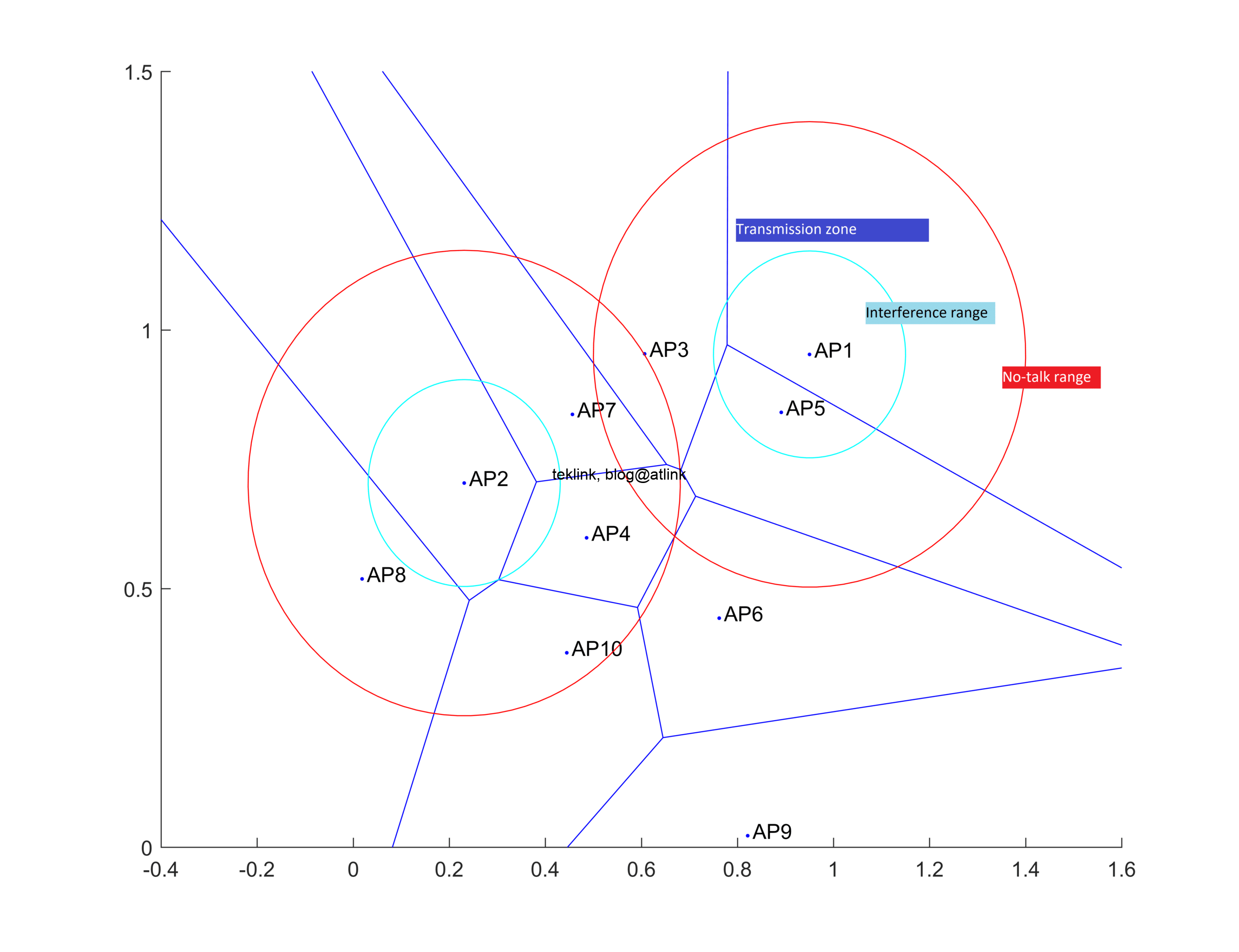In this post, we present the work on radio coverage in Wlans, accessible at this address: A novel beamforming based model of coverage and transmission costing in IEEE 802.11 WLAN networks, about how to modelize the radio area coverage to enhance costing of the transmission opportunity in such networks.
The work argues that IEEE 802.11 WLAN indoor networks face major inherent and environmental issues such as interference, noise, and obstacles. At the same time, they must provide a maximal service performance in highly changing radio environments and conformance to various applications’ requirements. For this purpose, they require a solid design approach that considers both inputs from the radio interface and the upper-layer services at every design step.
The work details also how the modelization of radio area coverage is a key component in this process and must build on feasible work hypotheses. It should be able also to interpret highly varying characteristics of dense indoor environments, technology advances, service design best practices, end-to-end integration with other network parts: Local Area Network (LAN), Wide Area Network (WAN) or Data Center Network (DCN). This work focuses on Radio Resource Management (RRM) as a key tool to achieve a solid design in WLAN indoor environments by planning frequency channel assignment, transmit directions and corresponding power levels. Its scope is limited to tackle co-channel interference but can be easily extended to address cross-channel ones.
The next figure shows a unified Wlan architecture that could help overcome current standalone network limitations.

In this example of network architecture, the access points are associated to the wireless controller. At the WLC level, RRM processes all the informaion available on the radio interface to define a radio coverage plan that it applies by return to AP.
In this paper, the authors consider beamforming and costing techniques to augment conventional RRM’s Transmit Power Control (TPC) procedures that market-leading vendors has implemented and related research has worked on. They present a novel approach of radio coverage modelization and prove its additions to the cited related-work’s models. The proposed solution model runs three algorithms to
evaluate transmission opportunities of Wireless Devices (WD) under the coverage area. It builds on realistic hypotheses and a thorough system operation’s understanding to evaluate such an opportunity to transmit, overcomes limitations from compared related-work’s models, and integrates a hierarchical costing system to match Service Level Agreement (SLA) expectations. The term “opportunity” in this context relates also to the new transmission’s possibilities that related-work misses often or overestimates.
The next figure shows an illustration of the idea behind this solution.

The radio coverage could be represented by a circle or disks (such as in legacy models) but also by a pattern like the one presented in the figure: beams or lobes. The advantage of such model is multiple: uses technological facts about the beamforming supported in the current (modern) access points, could be generalized to the previous more generic models…
The work concludes that the proposed new model of transmission processing is built on a new costing and opportunity evaluation model that leverages advances in antenna array processing such as beamforming techniques and Wlan integrated (with other technologies or protocols) design best practices. In addition to the transmission channels and corresponding transmission power levels, it considers the direction of transmission or beam as an additional degree of freedom of dynamic RRM purposes; A comparison to other models indicates that this work model is stable and performs better in very dense Wlan indoor and WLC-based network deployments.





